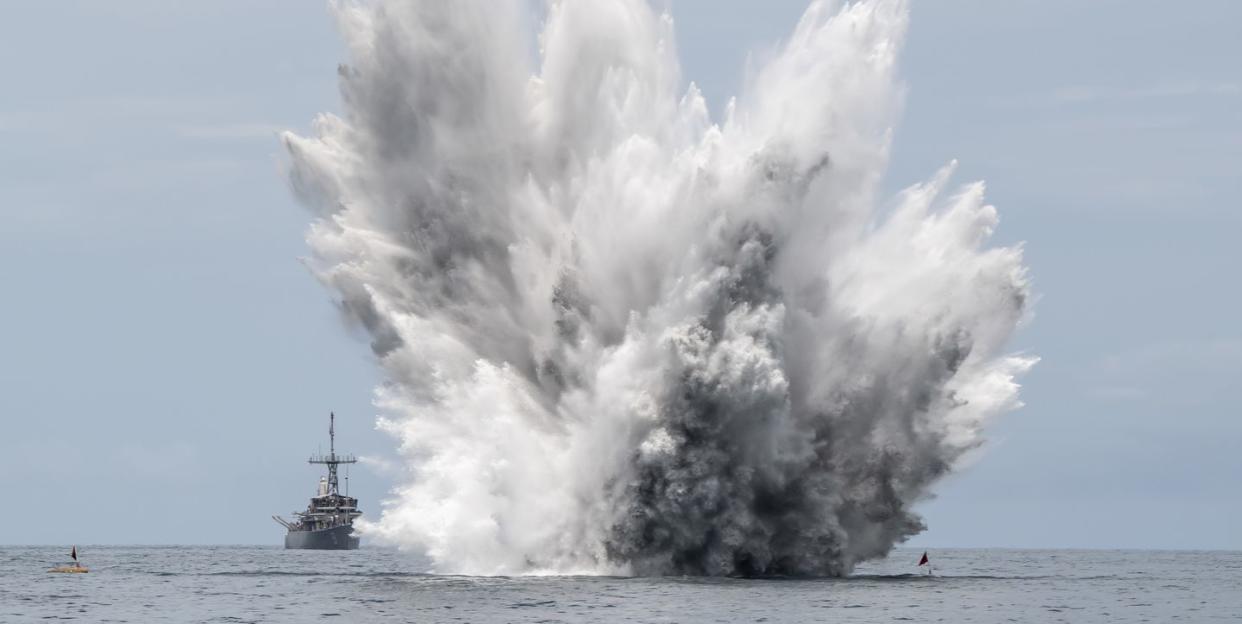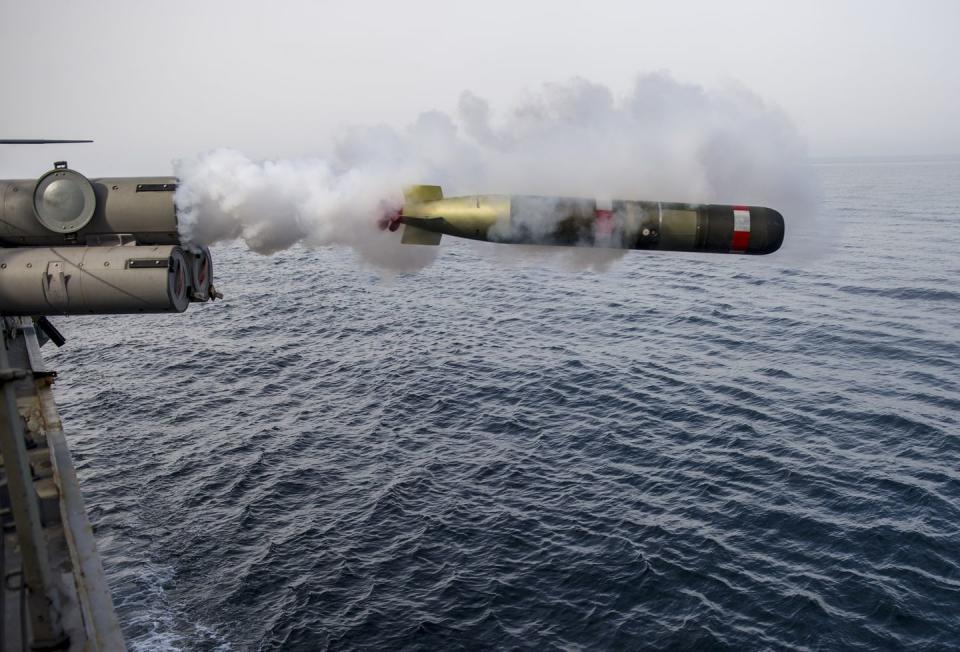Ambush! The Navy’s New Hammerhead Mine Is a Sub Destroyer

The U.S. Navy is reinvesting in sea mines as a means of harassing enemy ships and submarines.
The new Hammerhead mine will be placed by unmanned undersea vehicles where they could intercept enemy submarines.
Once the mine detects a passing enemy sub, it unleashes a homing torpedo to chase down its prey.
The U.S. Navy is developing a new sea mine to make the lives of enemy submarines in wartime a lot trickier. The new Hammerhead mine is designed to lie in wait on the seabed floor, listening for the telltale signs of enemy submarines. Once a foe passes over, Hammerhead unleashes a homing torpedo that hunts down and destroys the offending sub.
Laid in the path of enemy ships, sea mines can slow passage through vital areas or deny transit entirely. Sea mines are also difficult to detect, and the underwater explosions caused by their detonation can cause serious, sometimes fatal damage to a ship’s hull.
⚓️ You like badass boats. So do we. Let's nerd out over them together.

Unglamorous and unmanned, mines don’t receive much publicity, but they’re also more effective than the general public is led to believe. Allied sea mines sank 266 Japanese merchant or naval vessels during World War II—all without endangering a single Allied sailor or airman. Three U.S. Navy warships, the cruiser USS Princeton, frigate USS Samuel B. Roberts, and the amphibious transport USS Tripoli, have been damaged by sea mines since the end of World War II.
Now, faced with the prospect of naval warfare across the expanse of the North Atlantic and Pacific oceans, the U.S. Navy is preparing a new generation of sea mines to help box in Russian and Chinese Navy submarines. The new Hammerhead mine is a modular system consisting of a “capsule module (to include the effector), a mooring module, an energy module, a sensor module, a command, control, signal processing and decision module, and a communications module.” The capsule module includes a Mark (Mk.) 54 lightweight hybrid homing torpedo.

The Navy plans for uncrewed underwater vehicles (XLUUV) such as the new Boeing Orca to plant Hammerhead mines in key locations. It could also deploy mines in key straits and passages, potential battlefields, and other locations.
Here’s how Hammerhead works. After the XLUUV releases the Hammerhead, the mooring module anchors the mine to the seabed where it might wait days, weeks, or even months for the activation order. Once the command and control module receives the activation order, the sensor module quietly listens for the acoustic signature of approaching enemy submarines, running suspected underwater noises through the signal processing and decision module and comparing them to the recorded signatures of known enemy submarines. If an enemy sub is confirmed present, Hammerhead can release its Mk. 54 torpedo and then signal its controllers it has engaged an enemy sub.

One important role for Hammerhead could be to stop Russia’s new Poseidon nuclear apocalypse torpedo. Poseidon, a large, 65 foot long nuclear-powered torpedo with a two megaton warhead, is designed to attack ports and coastal targets during a nuclear war. Poseidon would likely be launched from specially modified Russian Navy submarines and travel underwater at speeds of 56 knots, making it difficult to intercept. A wall of Hammerhead mines laid across likely Poseidon transit routes could stop the doomsday weapon in its tracks.
The Navy began work on Hammerhead in 2018 and wants industry to deliver 30 prototypes in 2021. Production mines should be delivered in 2023.
You Might Also Like

 Yahoo News
Yahoo News 
